Mouse infestations are an urgent and concerning issue that can affect both residential and commercial properties. These small rodents can cause significant structural damage, chew through wiring, contaminate food, and carry diseases. The presence of mice can rapidly grow into a severe problem if not addressed immediately, as they reproduce quickly and adapt to their environment.
The importance of promptly handling a mouse infestation cannot be overstated, as it can impact the health, safety, and integrity of the building. Utilizing fast and reliable solutions is crucial to effectively eradicate the problem and prevent future infestations.
Key takeaways
- Address infestations promptly to prevent health risks, damage, and food contamination. Swift action reduces costs.
- Learn signs like droppings, gnaw marks, and noises. Inspect suspected areas for evidence.
- Seal gaps, cracks, and vents with caulk or steel wool to prevent mice from entering.
- Store food securely and clean spills to make the environment less appealing to mice.
- Organize storage, clear clutter, and nesting materials to remove hiding spots.
- Use different traps and baits strategically to catch mice effectively.
- Peppermint oil, used cat litter, and ultrasonic devices can naturally repel mice.
- For complex cases, consider hiring professionals with expertise and tools.
- Use materials like steel wool and caulk to block gaps, keeping mice out.
- Seal trash containers and maintain outdoor areas to deter mice.
- Trim plants, move firewood, and maintain cleanliness to discourage mice outside.
- Regularly check for signs, act promptly, and practice preventive measures.
- Teach prevention, cleanliness, and deterrence to involve everyone in effective control.
Here are 14 Quick Fixes for Mouse Infestations
1. Identifying Mouse Infestations
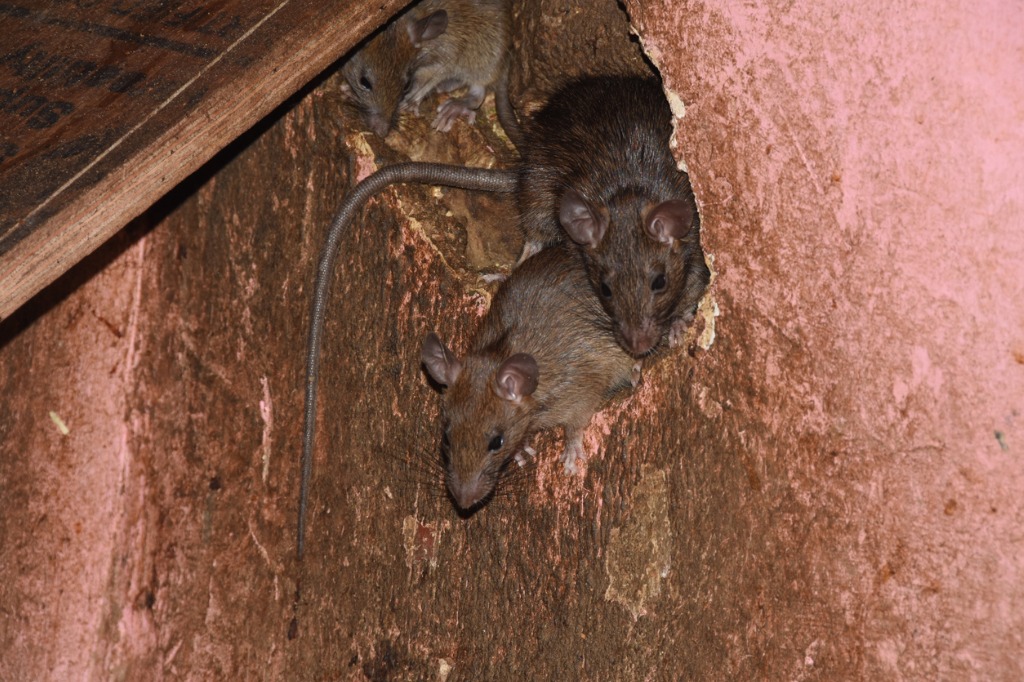
Identifying mouse infestations at an early stage is a crucial step in dealing with the problem effectively. Signs of an infestation can be quite apparent if you know what to look for. Telltale indications include finding mouse droppings, observing gnaw marks on wires, furniture, or walls, and hearing scampering noises, especially during the night when mice are most active.
A thorough inspection of suspected areas, such as hidden corners, storage spaces, and gaps behind appliances, may reveal further evidence of their presence. Swift identification of these signs is paramount in taking immediate and appropriate actions to combat the infestation.
2. Immediate Actions
Once a mouse infestation has been identified, immediate actions are necessary to prevent further infiltration and multiplication. A quick response not only curtails the infestation but also minimizes potential damage and health risks. Here’s a brief outline of the immediate actions that should be taken:
Seal Entry Points:
- Cracks, gaps, and vents can serve as entryways for mice.
- Utilizing caulk, steel wool, or other sealants to close these openings is essential to keep mice out.
The process of sealing entry points is a vital first step in addressing an infestation, as it cuts off the primary means by which mice can enter a building.
Remove Food Sources:
- Storing food in airtight containers.
- Cleaning crumbs and spillages promptly.
By eliminating their food sources, you make the environment less inviting for mice, greatly reducing their reasons to stay.
Clear Clutter:
- Reducing hiding spots by organizing storage areas.
- Keeping areas like garages, basements, and attics free from unnecessary clutter.
Cluttered spaces provide mice with hiding spots and nesting materials. Clearing these areas helps to expose and remove the infestation more effectively.
3. Traps and Baits
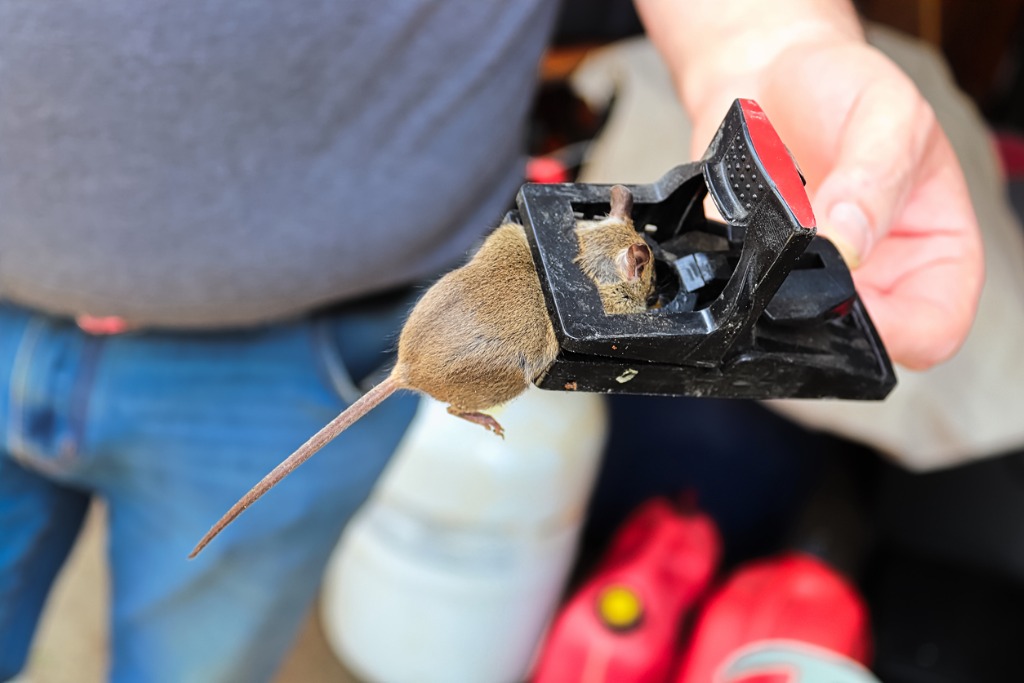
The deployment of traps and baits is an essential step in the eradication of a mouse infestation. There are several types of traps to consider:
- Snap Traps: Quickly kills mice, ideal for heavy infestations.
- Glue Traps: Immobilizes mice, allowing for easy removal.
- Live-Catch Traps: A humane option for catching and releasing mice.
Choosing the right type of trap depends on personal preferences, the infestation level, and ethical considerations.
Proper trap placement is essential for successful eradication. Traps should be placed along walls, where mice usually travel, and near entry points or areas with noticeable activity. The strategic positioning of traps capitalizes on the mice’s natural behavior and pathways, ensuring that the traps are effective.
Using baits effectively is another critical aspect of trapping. Items like peanut butter, chocolate, and seeds are highly attractive to mice. Proper baiting ensures that traps are appealing to the mice and increases the success rate.
4. Natural Deterrents
In addition to traps and baits, natural deterrents can be an integral part of a mouse control strategy. Utilizing peppermint oil as a repellent is a popular method, as mice are often deterred by its strong scent. By placing a few drops on cotton balls near suspected entry points, homeowners can create a natural barrier against these rodents.
Another unconventional yet effective strategy is placing used cat litter near entry points. The smell of a predator can scare mice away, making them less likely to enter the area. Additionally, using ultrasonic devices that emit sound frequencies unpleasant to mice can be another way to keep them at bay.
These natural deterrents can be particularly appealing for those looking for non-lethal and environmentally friendly ways to control a mouse infestation. They can be used in conjunction with other methods for a comprehensive and humane approach to managing the problem.
5. Proper Cleaning and Sanitization
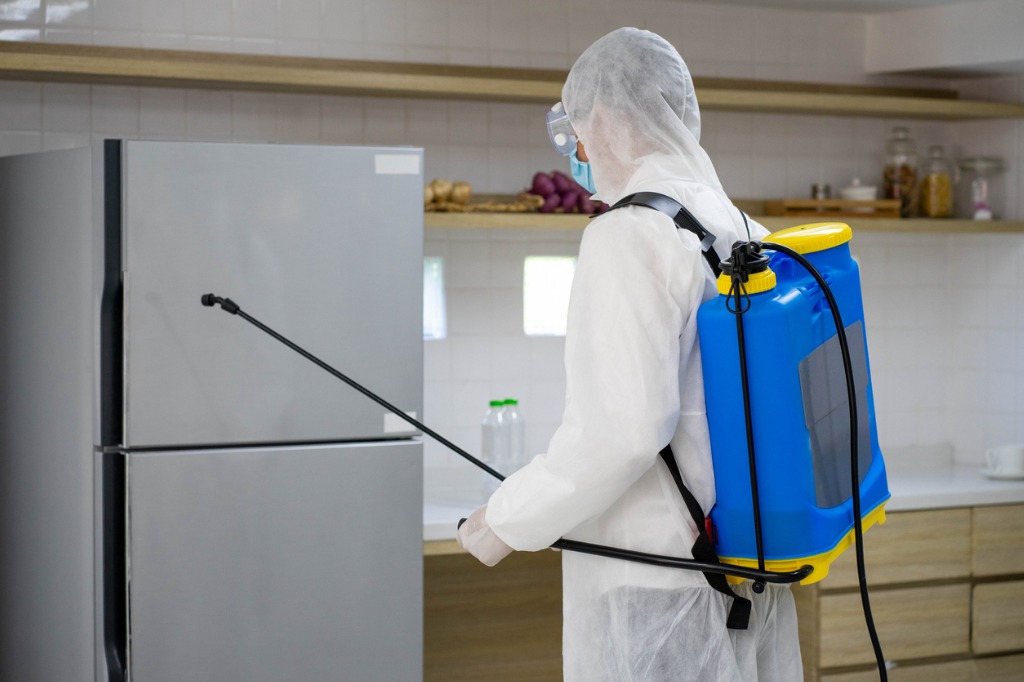
After addressing the immediate infestation through traps, baits, and natural deterrents, proper cleaning and sanitization are vital to ensuring that the environment is safe and less inviting to future infestations. This process includes cleaning up mouse droppings and urine using gloves and appropriate cleaning agents to minimize health risks.
Disinfecting affected areas with a solution that kills bacteria and viruses is also essential to prevent potential disease transmission. Reducing odors that attract mice, such as lingering food smells or the scent left by previous rodent inhabitants, adds an additional layer of protection against reinfestation.
Proper cleaning and sanitization not only restore hygiene and safety but also act as a preventive measure to keep mice from returning, making it a critical part of a comprehensive mouse control strategy.
6. DIY Repellents
For those looking to take a hands-on approach to mouse control, several DIY repellents can be crafted using common household items. These methods are not only cost-effective but often less harmful to the environment:
- Making a Vinegar and Water Spray: Mixing vinegar with water creates a pungent spray that can deter mice. Spraying this solution near entry points can make the area unappealing to them.
- Sprinkling Cayenne Pepper or Chili Powder: These hot spices can be sprinkled in areas where mice activity is noticed, serving as a natural repellent.
- Using Fabric Softener Sheets: Placing fabric softener sheets in infested areas can also keep mice away due to the strong scent.
These DIY solutions are attractive for their accessibility and simplicity, making them an option for immediate action. However, while they can deter mice, they are often best used in conjunction with other methods for a more comprehensive approach.
It’s essential to understand that DIY repellents might offer temporary relief but should be part of a broader strategy that includes identifying the infestation, taking immediate actions, employing traps, and maintaining cleanliness to achieve long-term control over the mouse problem.
7. Essential Oils
Essential oils offer another natural and aromatic approach to deterring mice. Oils such as eucalyptus, tea tree, and lavender are known for their strong scents, which can be unappealing to mice. By mixing these oils with water, a spray can be created that serves as a repellent when applied to potential entry points or areas of infestation.
The pleasant fragrance to humans but the offensive odor to mice makes essential oils a popular choice for those seeking a gentle yet effective way to keep mice away. This method can be particularly appealing for households with pets or children, where safety and non-toxic solutions are priorities.
Essential oils provide a humane and eco-friendly option that can be a valuable part of an integrated approach to mouse control.
8. Professional Extermination
While many of the aforementioned methods can be effective in controlling a mouse infestation, there are instances when professional extermination becomes a necessary course of action. When an infestation becomes widespread, and persistent, or if DIY methods prove insufficient, considering hiring an exterminator might be the best option.
Professional exterminators bring specialized knowledge, experience, and tools to address the infestation thoroughly and efficiently. They can assess the extent of the problem, develop a tailored plan, and implement strategies that ensure complete eradication.
The benefits of professional expertise include not only the immediate resolution of the issue but also guidance on preventive measures to keep the infestation from reoccurring. Investing in professional extermination can provide peace of mind, knowing that the problem is being handled with competence and care, especially in complex or severe infestation scenarios.
9. Sealing Cracks and Openings
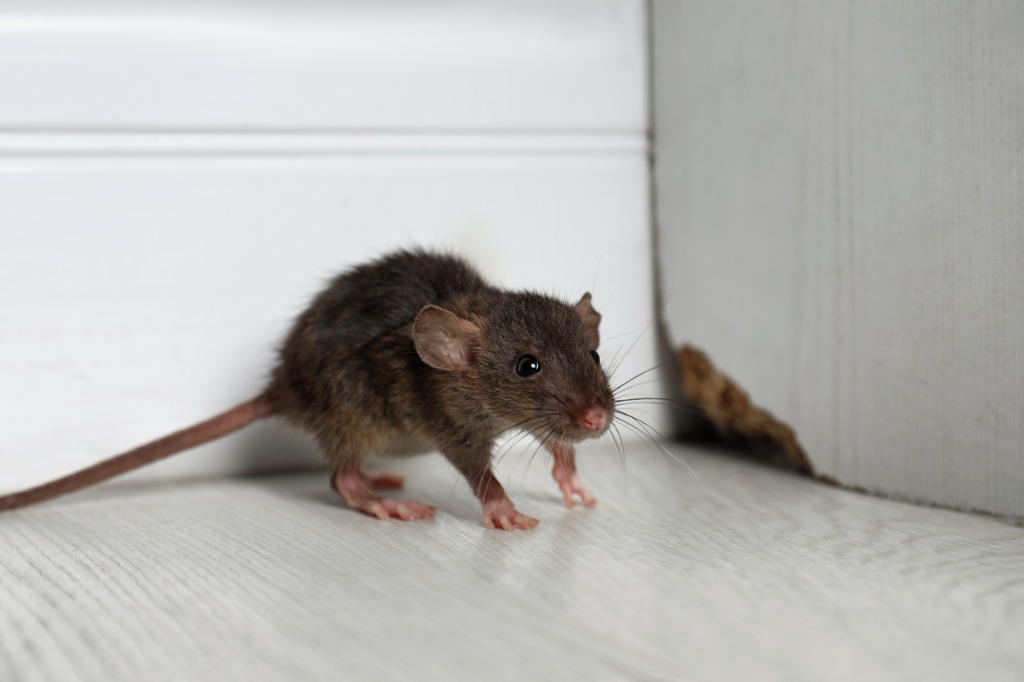
One of the most proactive measures to prevent both current and future mouse infestations is the meticulous sealing of cracks and openings throughout the building. Using materials like steel wool and caulk, homeowners can effectively close gaps and cracks where mice may enter.
These materials are typically resilient to gnawing, making them an excellent choice for blocking entry points. By systematically identifying and sealing these openings, one can create a barrier that makes it substantially more difficult for mice to gain access.
This method is not only vital in the immediate control of an existing infestation but serves as a long-term preventive strategy. Ensuring that all potential entryways are closed off helps maintain a mouse-free environment, making sealing cracks and openings an essential part of comprehensive mouse control.
10. Secure Waste Management
Managing waste properly plays a vital role in preventing and controlling mouse infestations. Properly sealing trash cans with tight-fitting lids prevents mice from accessing food scraps and other attractants. This includes both indoor and outdoor trash containers, as exposed waste can draw mice to the vicinity of a building.
Additionally, clearing outdoor areas of debris and yard waste reduces the number of potential sheltering spots for mice, making the area less appealing for habitation. Implementing a robust waste management strategy that emphasizes proper containment and timely disposal minimizes the factors that might attract mice in the first place.
This practice complements other control measures, reinforcing the overall effort to create an environment that’s inhospitable to mice and contributes to maintaining a clean and pest-free space.
11. Maintaining Yard and Garden
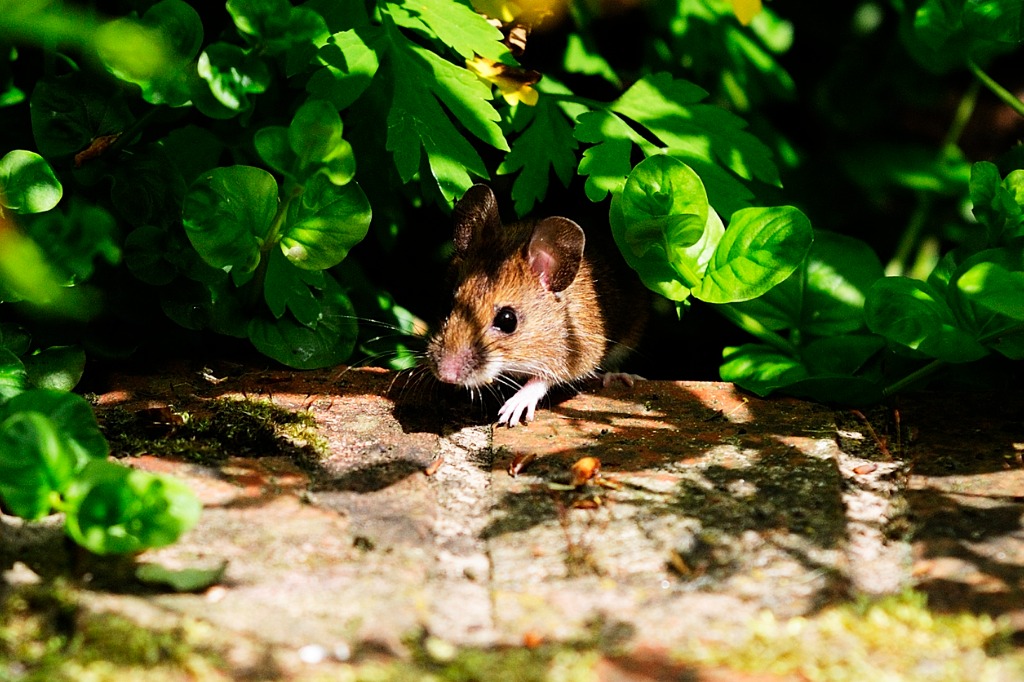
Maintaining the yard and garden area plays a critical role in deterring mice from approaching the home. Proper care includes:
- Trimming Vegetation Away from the House: Overgrown shrubs and trees near the home can provide pathways for mice to enter.
- Storing Firewood Away from the Home: Stacked wood can become a nesting site, so keeping it at a distance from the house helps in reducing the attraction.
Beyond these specific actions, overall yard maintenance contributes to making the exterior of a home less inviting to mice. Keeping the grass trimmed, removing clutter, and organizing storage areas create an environment that is not conducive to rodent habitation.
Proper landscaping and yard care work hand in hand with other preventive measures, such as sealing openings and managing waste, to build a comprehensive defense against mice.
The combined approach ensures that the entire property, both inside and out, is safeguarded against infestations, contributing to a clean and comfortable living space.
12. Monitoring and Prevention
The ongoing process of monitoring and prevention is crucial to maintaining a mouse-free environment. Regularly inspecting for signs of mice, such as droppings, gnaw marks, or distinctive scampering noises, allows for the early detection of any potential infestation. Immediate action can then be taken to address the problem before it escalates.
Implementing preventive measures, such as the sealing of entry points, maintaining cleanliness, and utilizing various repellents, contributes to a comprehensive defense strategy. A proactive approach that combines vigilance with continuous prevention not only manages existing issues but anticipates and precludes future problems.
By understanding the importance of both monitoring and prevention, homeowners can cultivate a holistic method of control that ensures ongoing protection against mouse infestations, fostering a safe and secure living space.
13. Educating Family Members
Educating family members about mouse prevention and control is an essential component in maintaining a mouse-free home. This includes teaching all members of the household, both young and old, about the signs of an infestation, the importance of cleanliness, and the measures that can be taken to deter mice.
Encouraging responsible behavior, such as properly storing food, promptly disposing of waste, and regularly inspecting common problem areas, helps create a collective effort in mouse prevention. By fostering an awareness of the issue and promoting a sense of shared responsibility, the effectiveness of all prevention and control measures is enhanced.
Education ensures that everyone in the home is actively participating in maintaining a clean and secure environment, reinforcing the overall strategy against mouse infestations. It transforms the task of mouse prevention from an individual effort into a collaborative and ongoing family commitment.
What steps can be taken in the yard and garden to deter mice?
- Trimming Vegetation Away from the House: Keeping shrubs and trees trimmed away from the home prevents mice from using them as pathways to enter.
- Storing Firewood Away from the Home: Stacked wood can be attractive for nesting, so it’s beneficial to keep it stored at a distance from the house.
- Keeping Grass Trimmed: Overgrown grass provides hiding spots for mice, so regular mowing can deter them.
- Removing Clutter and Debris: Clearing the yard of debris and clutter minimizes sheltering spots for mice.
- Organizing Storage Areas: Properly storing and covering garden tools, equipment, and supplies makes the area less appealing for mice to settle.
- Using Natural Repellents: Planting plants that are known to deter rodents, such as mint, can be an additional measure.
Together, these actions create an outdoor environment that’s inhospitable to mice, working in conjunction with other preventive measures inside the home to create a comprehensive defense against infestations.
Proper landscaping and yard care not only enhance the appearance of the property but also contribute to maintaining a clean and comfortable living space free from rodent pests.
How can DIY repellents be made using household items?
DIY repellents can be made using household items to deter mice. Here are some commonly used methods:
- Vinegar and Water Spray: Mixing equal parts of vinegar and water in a spray bottle creates a solution with a strong odor that’s unappealing to mice. Spraying this mixture around entry points can help keep them away.
- Cayenne Pepper or Chili Powder: Sprinkling cayenne pepper or chili powder in areas where you’ve seen mice can act as a natural repellent. The strong smell and taste are generally unpleasant to them.
- Fabric Softener Sheets: The strong scent of fabric softener sheets can deter mice. Placing these sheets in drawers, closets, or other infested areas can help keep them at bay.
- Peppermint Oil: Soaking cotton balls in peppermint oil and placing them near entry points can deter mice, as they typically dislike the smell of peppermint.
- Soap and Water Solution: A mixture of soap (like dish soap) and water can be sprayed around potential entry points. The scent and the slippery surface can discourage mice from entering.
- Eucalyptus, Tea Tree, or Lavender Oil Spray: Mixing a few drops of these oils with water creates a spray that can be used similarly to the vinegar solution. The strong fragrance of these oils is often repellent to mice.
- Used Cat Litter: If you have a cat, placing used cat litter near entry points can deter mice, as the smell signals the presence of a predator.
Conclusion
Dealing with a mouse infestation demands a swift and comprehensive approach that encompasses identifying signs, taking immediate actions such as sealing entry points, employing traps, natural deterrents, and DIY repellents, and focusing on cleanliness, waste management, and yard maintenance.
Key to success is acting quickly at the first sign of infestation, using a combination of professional and home-based solutions, and maintaining a continuous effort that involves all family members. The multifaceted strategy outlined here emphasizes not only resolving the current infestation but also adopting preventive measures to maintain a mouse-free environment.
This approach safeguards the home against the discomfort and health risks associated with infestations, ensuring a clean, secure, and pleasant living space.
Frequently asked questions
Addressing a mouse infestation promptly is vital to prevent health risks from diseases they carry, minimize property damage, and avoid food contamination.
Look for signs like mouse droppings, gnaw marks, and scampering noises. Thoroughly inspect suspected areas, such as corners, storage spaces, and gaps behind appliances.
Snap traps, glue traps, and live-catch traps are effective options. Proper trap placement along walls and entry points enhances their effectiveness.
Yes, natural deterrents like peppermint oil, used cat litter, and ultrasonic devices can be effective in combination with other strategies.

